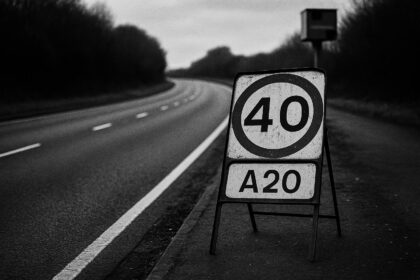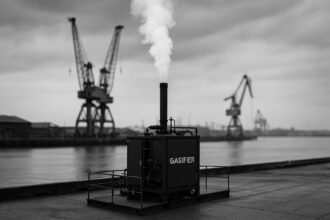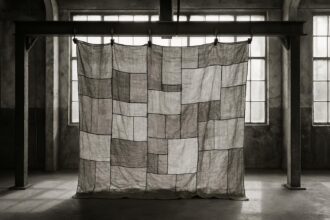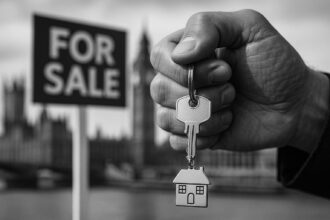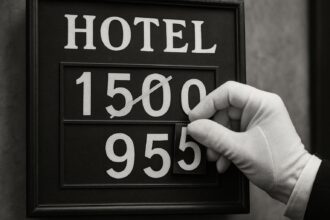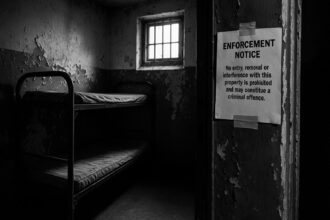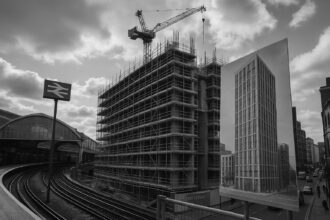A new Stormont study reveals that financial constraints and a lack of government funding are accelerating the decline of Northern Ireland’s historic buildings, with over a third now classified in poor or very poor condition and many left vacant.
The financial burden associated with maintaining historic buildings in Northern Ireland has been identified as a primary reason for the deterioration of the region’s built heritage. Recent research highlights an alarming statistic: 36% of listed buildings are categorised as being in poor or very poor condition, while a significant portion lies vacant. This study, conducted by Stormont’s Department for Communities, underscores the growing threat to these structures as their condition declines rapidly, having worsened considerably over the past decade.
Listed buildings, recognised for their historical or architectural significance, hold a degree of legal protection that permits alterations only with local council consent. With approximately 9,000 such buildings across Northern Ireland, the potential loss of these properties represents not only a cultural loss but also a diminution of civic pride and tourism appeal. Over 80% of surveyed owners expressed that their listed properties play a vital role in the local historic environment, yet many face impediments in maintaining these structures due to escalating costs.
According to the survey, a staggering 77% of owners cited inadequate government funding as a key hurdle in managing the upkeep of their buildings. Additionally, 67% reported that finding skilled builders and appropriate materials was increasingly challenging. A significant number of respondents also felt disillusioned, with nearly 20% believing that the value of their properties does not warrant investment in repairs. This sentiment echoes the findings of other reports, which criticise the lack of sustained funding for heritage conservation in Northern Ireland, particularly following the suspension of listed building grants in 2015.
Communities Minister Gordon Lyons addressed these findings, acknowledging the critical state of historic buildings. He labelled the situation “very worrying”, stressing the importance of heritage as a core driver of tourism and civic pride. Lyons highlighted the necessity for a comprehensive approach to heritage management, which includes developing policies through the forthcoming Heritage, Culture and Creativity Programme. This initiative aims to rejuvenate interest in and appreciation for Northern Ireland’s built heritage.
Support for owners of historic buildings has been somewhat inconsistent. The Department for Communities offers guidance on maintenance and repair, advising on best practices, such as retaining original materials and employing qualified conservation professionals for repairs. However, critics argue that the existing funding schemes, while beneficial, lack the targeted approach required to make a meaningful impact. For instance, the Ulster Architectural Heritage’s Heritage at Risk project currently monitors over 1,100 buildings, indicating that approximately 9% of listed buildings are at risk. Its work aims to assist owners in maintaining or restoring these vital structures.
As the pressure mounts on owners and stakeholders alike, many suggestions for improving conditions have emerged. From the provision of grants for repairs to adjustments in VAT and rate relief, the call for action is clear. These measures could significantly alleviate the financial strains and encourage more effective maintenance of historic assets.
In sum, the preservation of Northern Ireland’s historic buildings is at a critical juncture. Many involved believe that without substantial intervention and strategic support from the government, the unique architectural heritage of the region could face irrevocable loss. The potential consequences reach beyond mere aesthetics; they encapsulate elements of identity, history, and community pride, all of which are interwoven into the fabric of Northern Irish society.
Reference Map:
- Paragraph 1 – [1], [5]
- Paragraph 2 – [1], [2], [3]
- Paragraph 3 – [4], [5]
- Paragraph 4 – [5], [6]
- Paragraph 5 – [3], [6]
- Paragraph 6 – [1], [6]
Source: Noah Wire Services
- https://m.belfasttelegraph.co.uk/news/northern-ireland/cost-of-maintaining-nis-historic-buildings-cited-as-main-reason-behind-deterioration-research-shows/a595535510.html – Please view link – unable to able to access data
- https://www.communities-ni.gov.uk/articles/buildings-advice-and-maintenance – The Department for Communities in Northern Ireland provides guidance on the maintenance and repair of historic buildings. They offer advice to owners on best practices for preserving their properties, including on-site consultations. The department emphasizes the importance of retaining original materials and employing conservation-accredited professionals for repairs. They also highlight the significance of regular maintenance to prevent deterioration and ensure the longevity of historic structures. Additionally, the department provides specific guidance on common repair issues and offers information on available funding schemes to assist owners in maintaining their listed buildings.
- https://www.savebritainsheritage.org/campaigns/article/957/Northern-Irelands-Heritage-at-Risk-The-Giant-Cause – This article discusses the challenges facing Northern Ireland’s rural heritage, particularly focusing on the Replacement Dwelling Scheme from the late 1990s and early 2000s, which incentivized the demolition of old rural dwellings. It also highlights the suspension of government funding for listed building grants in 2015 and the subsequent reduction in funding in 2016-17. The article emphasizes the financial burden on owners due to inadequate funding and the need for a partnership approach to protect and restore Northern Ireland’s built heritage.
- https://www.ulsterarchitecturalheritage.org.uk/built-heritage-risk/ – The Ulster Architectural Heritage (UAH) and Historic Environment Division (HED) have been collaborating since 1993 on the Heritage at Risk project. As of 2024, there are 1,100 buildings on the register, with 879 being listed buildings, indicating that 9% of listed buildings are at risk. The project aims to provide assistance and advice to owners interested in maintaining or restoring at-risk buildings, acting as a catalyst for conservation and re-use of built heritage.
- https://www.standard.co.uk/news/uk/northern-ireland-belfast-b1226178.html – A recent survey reveals that 36% of listed buildings in Northern Ireland are in poor or very poor condition, with a third currently vacant. The survey also indicates a significant decline in the condition of listed buildings over the past decade. Communities Minister Gordon Lyons expressed concern over these findings, emphasizing the importance of preserving heritage as a driver of tourism and a source of civic pride. He highlighted the need for a partnership approach to protect and restore Northern Ireland’s built heritage.
- https://www.belfasttelegraph.co.uk/news/environment/northern-irelands-crumbling-heritage/28747938.html – The article discusses the challenges in preserving Northern Ireland’s architectural heritage, focusing on the inadequacy of grant schemes and the slow progress in surveying and listing buildings. It highlights that, despite the Northern Ireland Environment Agency (NIEA) providing around £20 million in grants since 2005, these funds have been insufficient to remove buildings from the Built Heritage At Risk in Northern Ireland (BHARNI) register. The article also points out the lack of a targeted approach in the grant scheme and the need for more effective management to protect historic buildings.
- https://www.niassembly.gov.uk/assembly-business/committees/2011-2016/public-accounts-committee/reports-2011-2016/report-on-safeguarding-northern-irelands-listed-buildings – The Public Accounts Committee report examines the safeguarding of Northern Ireland’s listed buildings, highlighting issues such as unrealistic timeframes for surveys, unnecessary survey work, and the absence of statutory requirements for owners to maintain buildings in good condition. Despite providing almost £20 million in grants since 2005-06, the report criticizes the lack of specific performance measures for the historic buildings grant scheme and calls for more effective management and targeted approaches to protect and preserve listed buildings.



